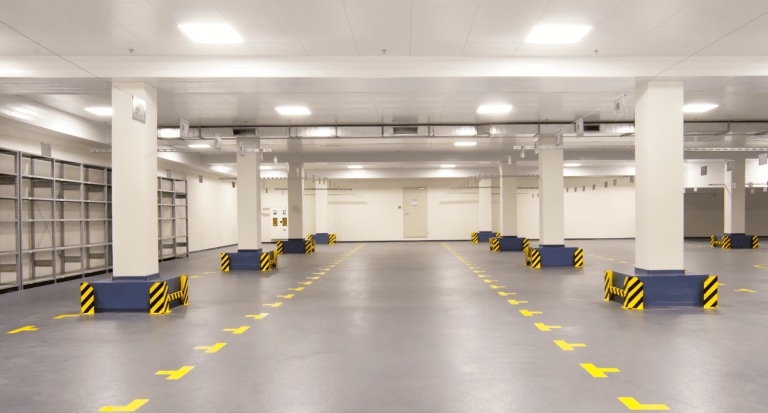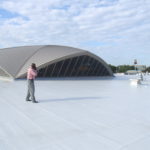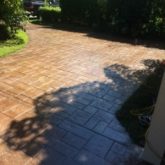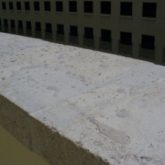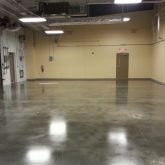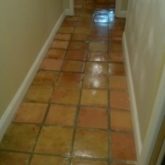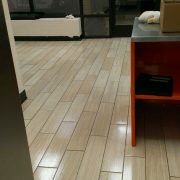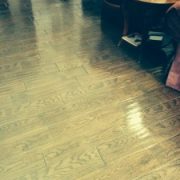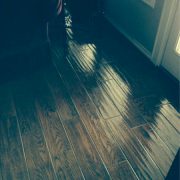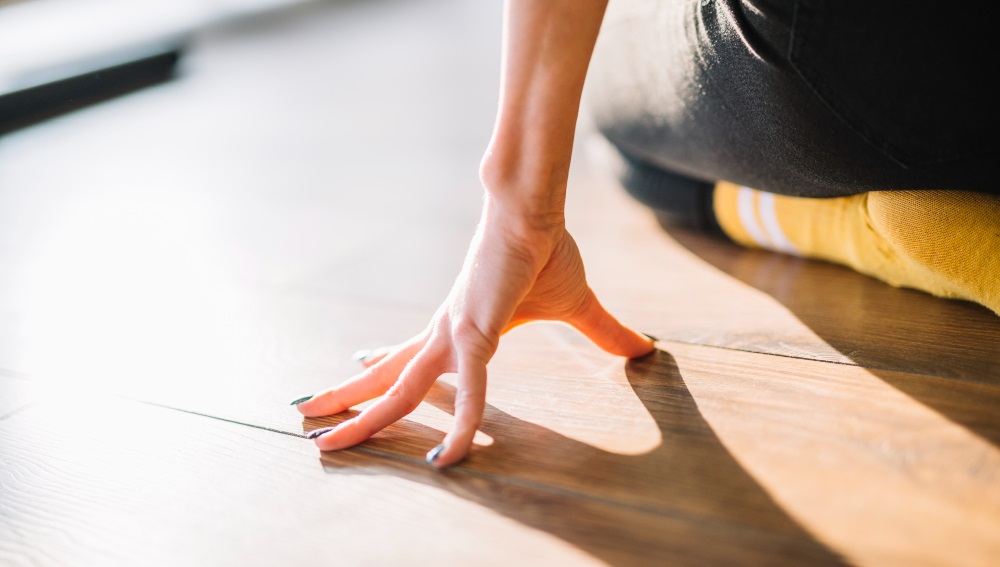
29
May
The Best Anti-Slip Tile Coating And Slippery Floor Treatment Options For Long-Lasting Safety
Learn the right treatment options to increase the slip resistance of your tile, without sacrificing it’s appearance – whether it’s inside your bathroom, or outside on your home’s patio.
Table Of Contents
- Why Should You Seal Your Tile Floor?
- What Happens When You Don’t Seal Tile?
- Is It Always Necessary To Seal Ceramic or Porcelain Tile?
- How To Deal With Tile Grout?
- What Are The Different Types Of Tile Sealers?
- Typical Results To Expect With Average Anti-Slip Coatings
- The Best Tile Sealer Of 2025
- How To Make Tile Less Slippery
Introducing Glazeguard® PLUS Anti Slip Floor Coating For Ceramic, Porcelain, and Other Non-Porous Tile Surfaces
Why Should You Seal Your Tile Floor?
There are several reasons why you should seal your tile floors or tile walls. First and foremost, sealing your tile will protect it from staining, wear and tear, and make it easier to clean and to maintain.
Secondly, sealing your tiles can change their look. So, it’s an option if you’re thinking about a different aesthetic than you currently have. You can make a tile floor more or less shiny, enhance or bring out the colors, or maybe give it a wet look. You’ve got options.
The third reason for sealing your tile is to improve the safety of slippery tile floors. Most property owners recognize the liability of slippery tile flooring. Applying an anti-slip tile coating can increase friction and reduce the risk of someone falling and getting injured.
Often, when people talk about sealing their floor, they are focused only on sealing and protecting the grout. However, if you’ve got porous tile and grout, you should consider using a tile sealer to make it easier to clean and maintain, as well as increase the tile’s longevity.
While sealing a very dense, non-porous, glazed tile like porcelain is not absolutely necessary, using a sealer would enhance the appearance by protecting the tile and grout, and helping to keep it clean.
And, if that very smooth tile surface (without any anti-slip coating applied) results in people slipping when it’s wet, using the right sealer can provide slip resistance as well.
What Happens When You Don’t Seal Tile?
When you choose not to seal your tile, you are greatly decreasing the longevity of your floor, and increasing the maintenance needed to keep it clean.
Porous tile and grout that is not sealed is susceptible to a number of problems. Most importantly, it’s going to be much more difficult to keep that tile and grout clean. You’ll notice water based stains, dirt and bacteria getting trapped on the surface, and soaking into the tile. This transforms your beautiful tile surface into a nightmare to keep clean.
From residential bathrooms to restaurant floors, these surfaces are exposed to excess moisture and harsh cleaning chemicals. These cause more staining and deterioration to tiled surfaces than if they were sealed.
Odor is a big problem. Especially for floors with grout. Water, moisture, and bacteria – left alone for enough time can lead to mold and mildew. So, if you want to keep your floor clean and sanitary with a lot less maintenance, consider using a sealer for the tile and grout.
Is It Always Necessary To Seal Ceramic or Porcelain Tile?
If you have a glazed tile floor that’s very dense and impervious, then you don’t necessarily need to seal it.
Whenever you seal something, you’ll always need to maintain it. Sealers aren’t indestructible. They don’t last forever. Their purpose is to withstand damage, so the tile underneath doesn’t have to.
Sealing your tile floor means you will always have to come back and reseal it in the future. It is important to understand that when you seal the tile, then there is some extra care and effort that’s needed as well, particularly on a very dense, very smooth surface.
For example, think of an industrial or commercial kitchen. There is a lot of oil, grease and excess water that can all cause slippery hazards. Using a topical sealer for the tile in that environment can actually make it more slippery. If it’s not necessary to seal the tile, you may still want to seal the grout because it is typically very porous, and much harder to keep clean.
How To Deal With Tile Grout
The grout between tiles can easily trap bacteria, which will lead to odor problems. Foul odors due to poor sanitation are a big concern for commercial places, like restaurants and public bathrooms, and homes with children and pets. These places encounter a lot of organic material that can stain porous grout as they decay.
Those messes should be handled with a good microbial cleaner – like our CoverClean AE and our Emerald Floor Maintainer, which are great deep cleaning treatments.
The microbial organisms in these formulas will actually consume the odor-forming bacteria, oil, and grease, without leaving a residue. They will also help with tile slip resistance of a tile. These types of microbial cleaners are also great when you’re cleaning grout without sealing it.
Another option for dealing with porous grout is to use penetrating sealers (the ones that work on porous tile). A penetrating or impregnating sealer soaks into the tile and doesn’t form a film on the surface, therefore it does not change the tile characteristics to cause any slip hazards.
In our example of the commercial kitchen with porous grout (or quarry tile as they call it), using a penetrating sealer would work to repel water, oil, stains, etc. Our CoverSeal Premium penetrating sealer is extremely oil and stain resistant.
Different Types Of Tile Sealers
The types of sealers that are available for use on tile and grout are divided into two broad categories:
- Penetrating or impregnating sealera, and
- Topical sealers.
Penetrating sealers soak into the surface, and don’t change the appearance. Topical sealers form a film on the surface, and that thin film acts as an absolute barrier.
Topical sealers will change the look of the tile; they can bring out the colors and even create a new sheen, like glossy or matte. They provide enhancement and some depth, as well as the protection. (To address any slippery surface issues, you can use an anti-slip additive to your sealer – like our CoverGrip.)
Penetrating sealers work by absorbing into the tile’s surface, as opposed to bonding over the top. This is what makes penetrating sealers perfect for use on porous tiles like Natural Stone, Saltillo, and other unglazed tile without changing their beautiful natural appearance.
Average topical sealers or concrete sealers will not bond to denser ceramic and porcelain, which is why you might see recommendations against using a topical sealer on those tiles. Very dense and impervious surfaces can’t handle a regular concrete sealer, or acrylic-based sealer, and display long term results.
Instead, the flooring industry had to specially formulate topical sealers to properly bond to those smooth tiles. We have done that at CoverTec, with proven results from our GlazeGuard® and GlazeGuard® Plus. They are made specifically for ceramic and porcelain.
Our products were carefully developed to contain adhesion promoters (chemical ingredients) to allow the sealer to bond at a microscope level to these very dense and very hard services for years.
A good topical sealer will be able to seal both the tile and the grout. And it puts a clear barrier across the floor that will make the tile and grout much easier to maintain.
Polyurethane vs. Acrylic
For topical sealers, the main chemistries available are either acrylic or polyurethane. Either of these can be water-based or solvent (chemical) based.
Acrylic sealers are typically a single component product. There’s no mixing involved, and they tend to be easier to apply and dry faster. Although the acrylic polymer is not as tough as the urethane.
Water-based urethane sealers usually come in two parts. That means you’ll be mixing a part ‘A’ and a part ‘B’ together. Those two parts will chemically combine, or cross-link, to form a much tougher polymer on the surface of your tile.
Both acrylic and polyurethane can be good tile sealers depending on what you’re looking for. However, the polyurethane tile sealers are more durable with longer lasting results. The trade off is that they come in two parts that you have to mix carefully and they take longer to dry.
To seal ceramic and porcelain, you will need a polyurethane sealer because acrylics do not create a strong or long-lasting bond over smooth, dense surfaces. Just make sure that the polyurethane sealer you want to use has advanced adhesion promotion.
Water Based vs. Solvent (Chemical) Based
Every sealer needs to be in some kind of a liquid solution – something for the polymer to be carried in. That carrier is either in the form of water or a chemical solvent solution. During application, that water or solvent evenly distributes the sealer across the tile, and then evaporates, leaving the protective ingredients behind.
Older sealer technology contained solvents for an inexpensive, easy to use, and quick drying experience. But now with modern water-based technology, we have the advantage of using a much safer product.
There’s no harmful odors or flammable liquids in water-based sealers. They are easier to manufacture and the resulting product is less sensitive to moisture. This makes water-based tile sealers ideal to use indoors.
You will find that nearly all of the tile sealers currently on the market are water-based because it is safer and permits better adhesion. Our GlazeGuard contains special adhesion promoters that allow a superior bond to denser, smoother tiles like ceramic and porcelain.
Typical Results When Using Store-Bought Anti Slip Coatings
The type of sealers that you will typically find in a big box or DIY home improvement store are standardized sealers. Generally, these are made with a lower concentration of active ingredients.
That is how they can produce these sealers at such a reduced cost, but of course the trade off is their durability and performance over time. Standardized sealers provide a quick polished shine made for unglazed, porous tile. They only have about 12 or 15 percent active ingredients.
A low solid sealer that’s not designed for a porcelain or ceramic tile will very quickly result in delamination. That means it is going to lift and peel within weeks, or maybe a couple of months at best.
Very soon, you will see those products lift and peel. When you start to clean with any kind of water based cleaner, you’re going to see moisture sensitivity and delamination.
Most of those standardized products dry very quickly, in 20 or 30 minutes, but that is not sufficient time for the sealer to bond to a ceramic or porcelain tile.
GlazeGuard® Ceramic & Porcelain Tile Sealer… The Best Tile Sealer of 2025
When you are searching for a proper tile sealer, look in the description for where it can be used and where it can’t. Our GlazeGuard® tile sealer is designed specifically for dense, glazed, non porous tile.
We formulated it with the highest percentage of active solids, or ingredients. We’re close to 50% active solids in the GlazeGuard® product, and ours contains proprietary adhesion promoters that allow us to bond better to ceramic and porcelain tile.
Our GlazeGuard® has a drying time of 10 to 12 hours. And that is very important in terms of getting a long term bond between the sealer and the floor. Fast drying acrylic sealers just will not bond well or long term to a ceramic or porcelain tile. GlazeGuard® will last three to five years on a tile compared to these standard acrylics that may last one or two months.
GlazeGuard®, our flagship topical sealer, is easily applied in a single coat with a ⅜ nap microfiber paint roller.
We highly recommend testing a new sealer in a discrete area of your floor first before using over the entire surface. However, please take the time to check out the fully detailed process on “how to apply GlazeGuard® tile sealer” in order to best prepare and seal your tile floor.
Treatment Options To Make Tile Less Slippery
It’s important, particularly with topical sealers, that you are aware that they may not be very slip-resistant when wet, like showers, or high-traffic kitchens. You should always check with a test area to see if you are satisfied with the sealer’s results in terms of slip-resistance.
If you are looking for an anti-slip treatment to make floors less slippery, then we have additives like the CoverGrip that can be mixed into the sealer at the time of application. Or, you can use a product like our GlazeGuard® PLUS which already has the CoverGrip additive in it. This produces an excellent anti-slip surface, and all you have to do is mix it up, and roll it out.
Both of these will dry out and leave the surface with more texture that you can feel, and will grip your feet well. And because it uses a clear, fine aggregate, it does not change the appearance of the tile significantly.
We also have treatments available for ceramic, porcelain, and natural tile that don’t involve sealants. Our Surface GripTreat® is an effective way of changing the surface characteristics so that the tile is much less slippery when wet.
It’s an excellent choice for exterior tile, and of course, one advantage of that product is that it’s very easy to maintain. So you don’t have to worry about lifting and peeling, particularly in those wet areas and/or high traffic areas.
The trade off, of course, is that it’ll be a little harder to keep clean. The more additive you put in… the rougher the surface… the more dirt it traps… and the more difficult it is to keep clean.
There’s no perfect answer but CoverGrip provides an effective solution, and we have a number of grades to make that trade off between cleanability and slip-resistance much more acceptable for the end user.
Conclusion
We hope this blog has provided you anti-slip tile treatment and coating options for long-lasting safety. Always remember to properly care for your tiles to keep them attractive and safe for use by humans and pets.
As always, if you have any questions about which product is the best for your unique situation, call us at: 754-253-3401
About Our Expert | Charles Idowu
Charles Idowu started his career as a civil engineer in 1983 in the UK. After achieving his MBA and his Chartered Engineer qualifications, Charles quickly became the waterproofing and coatings expert for a renowned British construction company. His international work landed him in South Florida, where he combined his engineering experience and passion for business to start CoverTec Products.
- 10821 NW 50th Street Sunrise Fl 33351
Phone: 888-580-0693
Email: service@covertecproducts.com
- Monday – Friday 8:30am – 4:30 pm


